#la morte amoureuse
Text
I loved as no one in the world has ever loved, with an insensate and furious passion, so violent that I am surprised that it did not cause my heart to burst.
Théophile Gautier, "La Morte Amoureuse" from Théophile Gautier's short stories (trans. George Burnham Ives)
#Théophile Gautier#desire#love#quote#la morte amoureuse#words#prose#literature#lit#the dead woman in love
80 notes
·
View notes
Text
notes: I included characters explicitly stated or heavily implied to be something other than human (vampire, etc.), therefore, for example, no witches (pannochka/the sotnik's daughter qualifies because of being undead)
#if the choice of options looks rather one-sided that's bc i was only including the books i've read myself#talk talk talk#dracula#bram stoker#the brides of dracula#lucy westenra#carmilla#joseph sheridan le fanu#beowulf#la morte amoureuse#théophile gautier#the master and margarita#mikhail bulgakov#the great god pan#arthur machen#viy#nikolai gogol#samuel taylor coleridge#literature
174 notes
·
View notes
Text
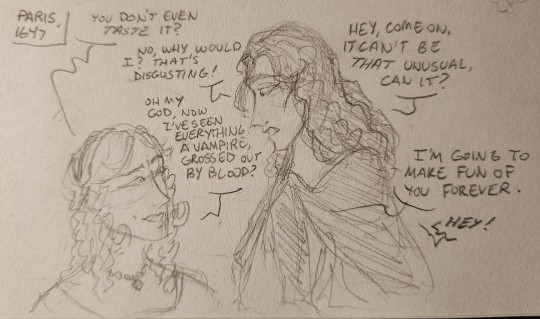

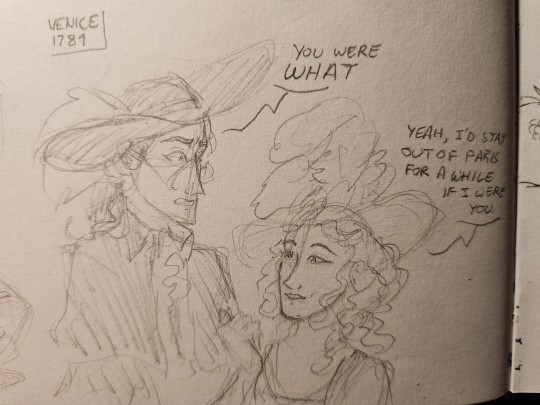
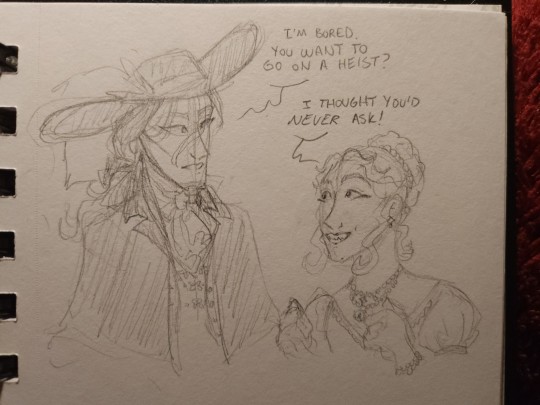
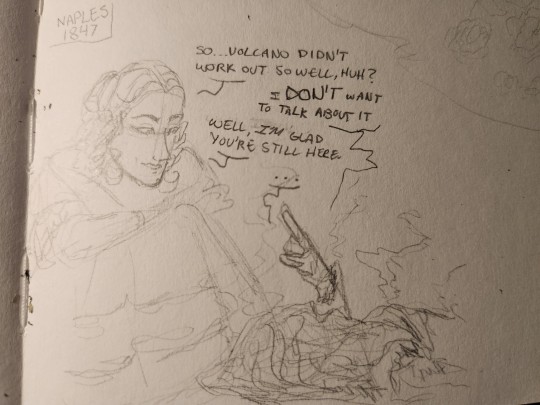

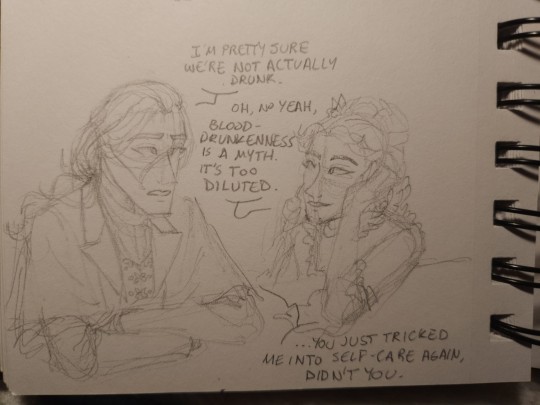

VARNEY POSTING PART 9: varney and clarimonde!! i think they should be friends :]
26 notes
·
View notes
Text
The Pretty Girl in Piccadilly


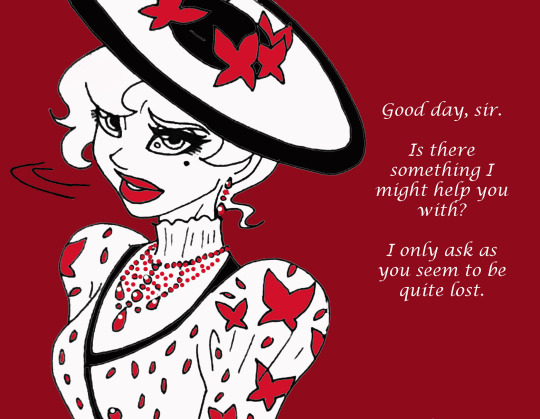
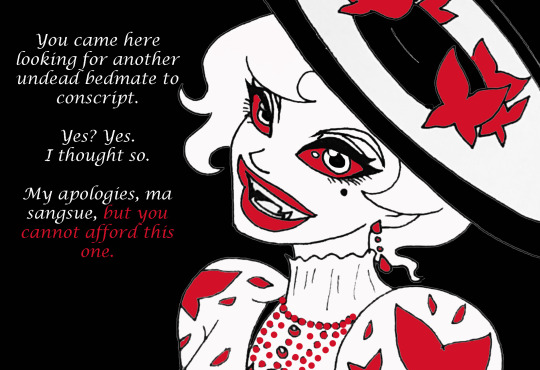
In which I have my own theory about why we never hear another word about this particular prey again in the book. Can’t have another victim pop up in the Count’s to-do list when she’s been dead a good long while to begin with. Especially when it’s this gal.
Dracula came, Dracula saw, Dracula pursued, Dracula got roasted halfway back to the grave for the rest of the day when he discovered he was not only not the only vampire abroad in England, but that Clarimonde, freshly resurrected undead Parisian party queen of Gautier’s tale (which predates Stoker’s novel by an age, being printed in France in 1836), has no patience for pushy wannabe blood sugar daddies. Rest in pieces, Count.
You can read Clarimonde’s story, “La Morte Amoureuse,” (”The Dead Woman in Love” or “Clarimonde” in English translation) by Théophile Gautier for free on Project Gutenberg here.
#just because you're a vampiric hedonist doesn't mean you have to be a dick about it COUNT#Clarimonde is proof positive of that#beloved bloodsucking party girl of my heart#clarimonde#la morte amoureuse#the dead woman in love#theophile gautier#dracula#dracula daily#bram stoker#pretty girl in piccadilly
322 notes
·
View notes
Text
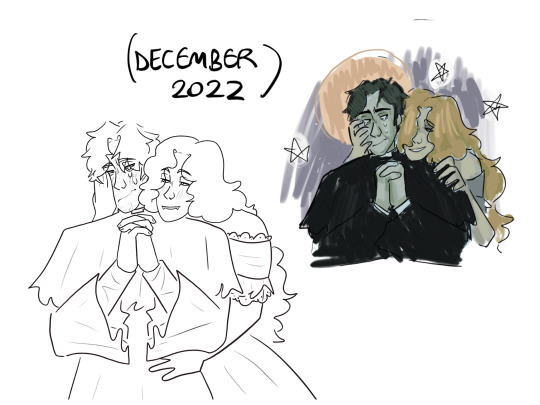

I finally finished this abomination from December. Clarimonde and Romauld meet Jonathan and Mina Harker when
59 notes
·
View notes
Quote
With her, death seemed but a last coquetry. The pallor of her cheeks, the less brilliant carnation of her lips, her long eyelashes lowered and relieving their dark fringe against that white skin, lent her an unspeakably seductive aspect of melancholy chastity and metal suffering; her long loose hair, still intertwined with some little blue flowers, made a shining pillow for her head, and veiled the nudity of her shoulders with its thick ringlets; her beautiful hands, purer, more diaphanous than the Host, were crossed on her bosom in an attitude of pious rest and silent prayer, which served to counteract all that might have proven otherwise too alluring—even after death—
La Morte Amoureuse by Theophile Gaultier
37 notes
·
View notes
Text
Pretty Girl in Piccadilly
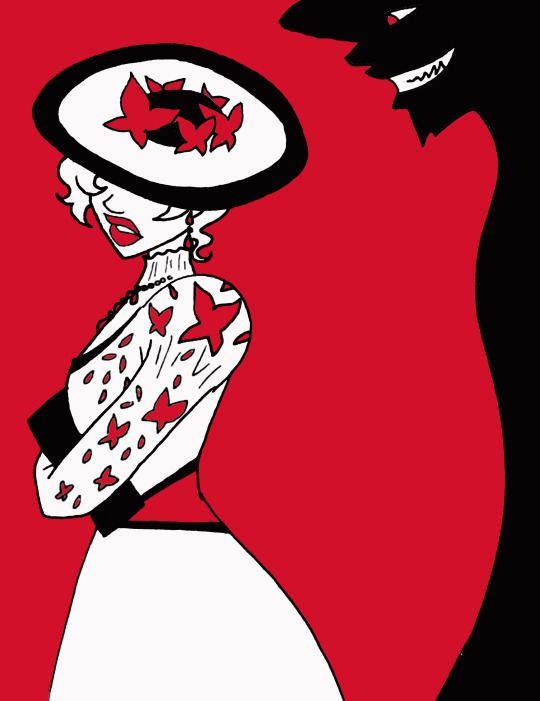
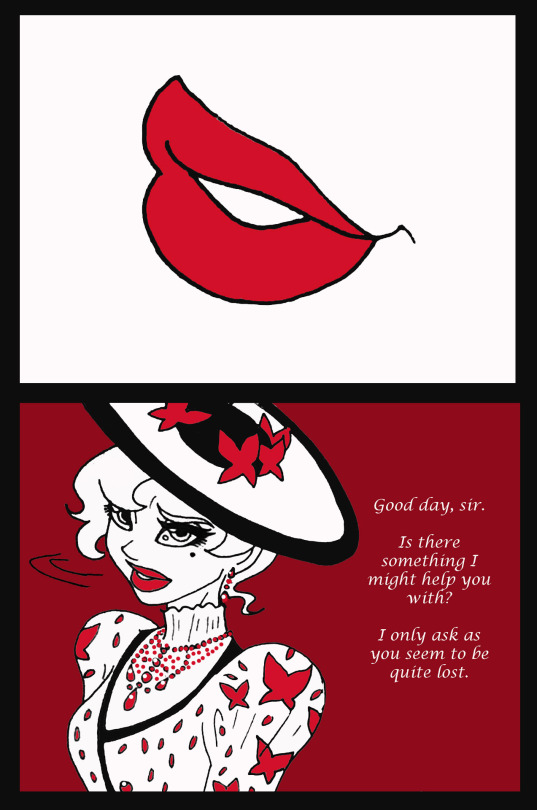

In which Dracula isn’t the only vampire in England. Just the only one who doesn’t know how not to make an undead ass of himself.
Clarimonde proceeded to educate him thoroughly and mortifyingly on this matter until Dracula just bat’d his way out of there. Hence why we don’t hear any more about this particular beauty again. Vlad’s pride wouldn’t be able to take the blow.
(Note: Clarimonde is not an OC, but the undead Parisian party queen of Théophile Gautier’s short story, “La Morte Amoureuse”/”The Dead Woman in Love,” translated in English under the title, “Clarimonde.” Her original publication year was 1836! Meaning she’s had her shit together among the mortal crowd for quite a while compared to some people. Her story is free to read on Project Gutenberg, here.)
#last repost of the night I think#don't want to gamble#but I missed my girl#clarimonde#la morte amoureuse#pretty girl in piccadilly#dracula#dracula daily#black red white
59 notes
·
View notes
Text
So because of that Hickeygibson Clarimonde (doomed vampire/monk romance) AU I keep imagining Romuald as Edward Ashley.
3 notes
·
View notes
Text
While we're on the subject of Clarimonde... love this little tale too much not to attempt a couple fanarts. (Historical accuracy might have failed me with the clothes, though.)

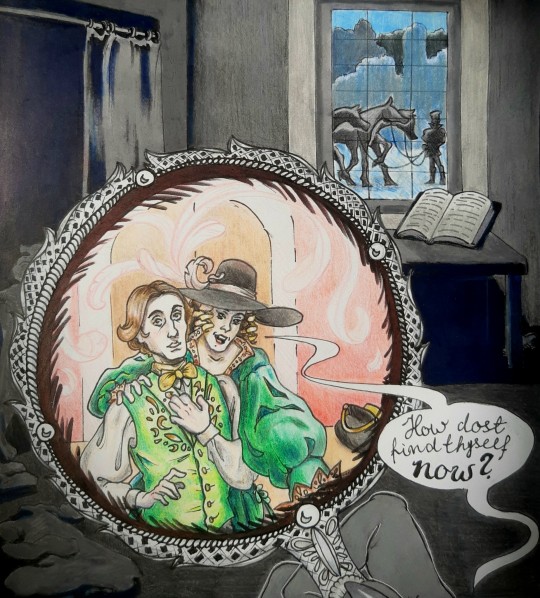
#clarimonde#la morte amoureuse#art nibbles#dracula daily#traditional art#just a selfie with the boytoy
25 notes
·
View notes
Text
"I myself had sealed the stone of my tomb, I had pushed the bolt of my prison with my hand!"
— Theophile Gaultier, La morte amoureuse
4 notes
·
View notes
Text
...I saw before me...a young woman of rare beauty, attired with royal magnificence. It was as if scales fell from my eyes. I experienced the sensation of a blind man suddenly recovering his sight.
Théophile Gautier, "La Morte Amoureuse" from Théophile Gautier's short stories (trans. George Burnham Ives)
64 notes
·
View notes
Text
At the risk of demonstrating zero reading comprehension... which century La Morte Amoureuse/Clarimonde is supposed to be set in? I know it was published in 1836 and Romuald narrates the events that started 42 years ago (he's 66 when he's narrating the story, and his ordination, when he first saw Clarimonde, took place when he was 24). But also, it's been quite some time since I read it, so I can't quote the passages which prompted me to think so (if there actually were any specific passages and not just Vibes), but I remember picturing a more distant period than circa 1794 when reading it. The aesthetic my mind kept providing was something in the vein of Dangerous Beauty, a biopic of a 16th century courtesan Veronica Franco:


And here's an illustration for the 1904 edition:
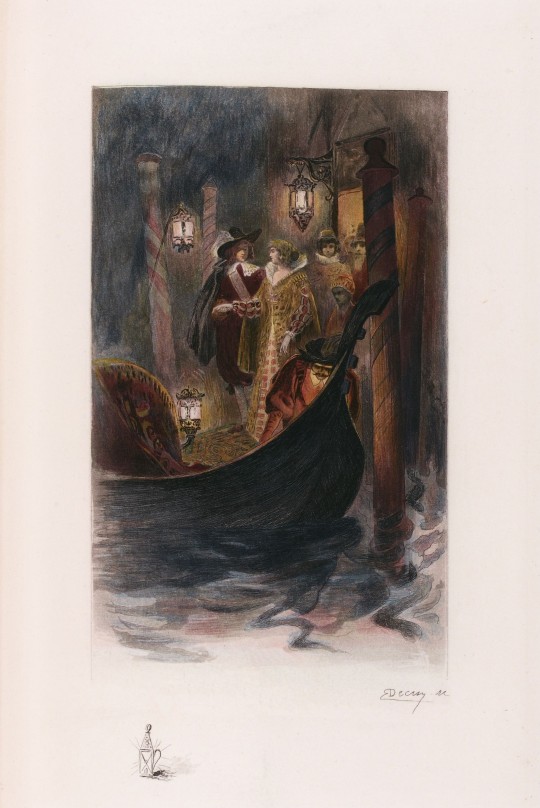
(source: Wikipedia)
Now, I'm no fashion historian in the slightest, but isn't the kind of standing collar Clarimonde has here more of a 17th century thing? I had almost no doubts about the events of the story taking place at least that long ago until the last year's Dracula Daily brought a wave of Gothic lit crossovers that included Clarimonde as well. Which, of course, means nothing because she's a vampire and could be perfectly alive undead and well in the Victorian era, but it made me question for the first time if I have completely misinterpreted the setting.
#certainly not asking this because i am plagued by a crossover idea#which i guess could be still shoehorned#because iirc we don't know for how long clarimonde has already been around at the beginning of the story#but it would be more interesting if the crossover took place after her relationship with romuald ended#(she said as if she was 100% going to write it and not just rotate it in her brain)#clarimonde#la morte amoureuse#théophile gautier#talk talk talk
9 notes
·
View notes
Text
Although she swallowed only a few drops, the fear of weakening me soon seized her, and she carefully tied a little band around my arm, afterward rubbing the wound with an unguent which immediately cicatrised it. Further doubts were impossible. The Abbé Sérapion was right.
Notwithstanding this positive knowledge, however, I could not cease to love Clarimonde, and I would gladly of my own accord have given her all the blood she required to sustain her factitious life. Moreover, I felt but little fear of her. The woman seemed to plead with me for the vampire, and what I had already heard and seen sufficed to reassure me completely. In those days I had plenteous veins, which would not have been so easily exhausted as at present; and I would not have thought of bargaining for my blood, drop by drop. I would rather have opened myself the veins of my arm and said to her: ‘Drink, and may my love infiltrate itself throughout thy body together with my blood!’
I carefully avoided ever making the least reference to the narcotic drink she had prepared for me, or to the incident of the pin, and we lived in the most perfect harmony.
I’m just saying! Other approaches were already narratively possible!!
(La Morte Amoreuse/Clarimonde, Théophile Gautier, 1836, Lafcadio Hearn translation)
17 notes
·
View notes
Text
Clarimonde, the Parisian Party Vampire You Never Read About
Quick, without touching Google, what gothic vampire tale came before Dracula, had a first-person narrator, involved a romantic/sensual undertone between the vampire and the victim, and some knowledgeable older man who revealed the nature of said vampire?
Did you guess Sheridan le Fanu’s, “Carmilla?” You’re close! The lesbian vampire escapade did predate (and surely influence) Bram Stoker’s Dracula. Carmilla went around nibbling her girlfriends in 1872 while the Count started his bloody spree in 1897. But before both of them we had the French short story, “La Morte Amoureuse,” (The Dead Woman in Love) by Théophile Gautier, translated into English alternately as, “Clarimonde,” “The Dead Leman,” or simply, “The Vampire.” But our girl Clarimonde often doesn’t get her Ye Olde Classic Bloodsucker badge as she’s owed, because her English translation only came out in 1908. But her original publication year was a dusty old 1836.
So. Who is Clarimonde? Clarimonde is, in essence, the most fun way to die and/or join the undead you could ask for in any era. Without giving everything away, she and her story, as narrated by the now-elderly priest she once seduced, are one of the most startlingly religion-risqué pieces of work ever dared in the 19th century. Hell, it would push some buttons today.
The gist for Clarimonde’s character is that she’s a beautiful prince’s consort with her own gifted castle to throw lavish bacchanals in. Her traits reveal she’s seemingly psychic, possibly Fae, and a combo of vampire and succubus. She sets her sights on the priest, Romuald, when he’s a handsome and earnest young man just about to undertake his final rites and become an official priest. Their eyes lock, minds connect, and bam, instant fairy tale Love at First Sight. Romuald doesn’t shy away from describing his adoration of her beauty, but also his pining for the potential of genuine romance with a soulmate; the fulfilling life and family he’s just now realizing he’s throwing away for the priesthood.
This undercurrent of bitterness, doubt, and disappointment with the austere nature of a clergyman’s life follows him from that moment onward. Even the old abbé who suspects what foul female evil is afoot can’t soothe him by saying, ‘hey, just pray about it.’ In fact, in all the old abbé’s appearances, Gautier/the Narrator Priest manages to sneak in a lot of stealthy “Young Goodman Brown”-esque hypocrisy. Like when the old abbé scoffs and sneers about Clarimonde’s latest bawdy party and all that went on in it…
(What were you doing at Clarimonde’s revelry, sir? Or are you just parroting bullshit you don’t actually know about??)
The love story between Clarimonde and Romuald is split between the priest’s increasingly exhausted daylit hours, while his dreaming self (if it is just a dream?) seems to run away to live with Clarimonde where they indulge in all the joys and heady vices they feel like, but each other most of all. It’s all as raunchy in its detail as was allowed at the time, but made more so for the fact that Romuald—who is, again, a priest—revels in the memory. Any shame is vaporous if it’s there at all. And then, blood comes into it.
Clarimonde (in the dream) takes to pricking him with a needle so she may keep herself alive on less than a thimble of blood. Romuald declares he would have given her all his veins if she’d asked. Clarimonde likely knows so. But no. Just a drop.
I’ll leave the exact details of the climax murky. But the last lines…
I returned to my presbytery, and the noble Lord Romuald, the lover of Clarimonde, separated himself from the poor priest with whom he had kept such strange company so long. But once only, the following night, I saw Clarimonde. She said to me, as she had said the first time at the portals of the church: ‘Unhappy man! Unhappy man! What hast thou done? Wherefore have hearkened to that imbecile priest? Wert thou not happy? And what harm had I ever done thee that thou shouldst violate my poor tomb, and lay bare the miseries of my nothingness? All communication between our souls and our bodies is henceforth forever broken. Adieu! Thou wilt yet regret me!’ She vanished in air as smoke, and I never saw her more.
Alas! she spoke truly indeed. I have regretted her more than once, and I regret her still. My soul’s peace has been very dearly bought. The love of God was not too much to replace such a love as hers. And this, brother, is the story of my youth. Never gaze upon a woman, and walk abroad only with eyes ever fixed upon the ground; for however chaste and watchful one may be, the error of a single moment is enough to make one lose eternity.
From. A. Priest.
A priest, so old and grey and—we can almost hear—choking with a young man’s mourning tears over the loss of a woman who in any other context would be painted as a vile Lilith archetype, a sexy-evil demoness embodying the temptation of the Devil (a ploy the old abbé uses, of course). Romuald only let the ‘separation’ happen for the sake of clarity in the end—his brain was being sawed in half by the waking VS sleeping worlds he lived in. That and lack of coherent thought are likely all that allowed [REDACTED] to happen, and that with him utterly miserable once the work was done.
It all plays out less like a horror story and more like a romantic tragedy wrapped in commentary so cutting against the stringent dogma of the Church you’d think it was a modern-day subversion of an older story. But no. Gautier churned this thing out, again, in 1836. “La Morte Amoureuse,”/ “Clarimonde” is free to read on Project Gutenberg and I sincerely recommend giving it a look if you want a taste of one of the earliest depictions of vampires (or any monster) as something other than the 110% Evil Demonic Threat Here to Sully Your Virtuous Soul with Impure Goings-On, and something almost Guillermo del Toroish in the daringly loving greys it plays with.
tl;dr: Clarimonde deserves more love and her own turn in the classic vampire spotlight. In the meantime, she’ll go on partying into the night and breaking hearts.
#tagging this as#dracula daily#because everybody's in a mood for some classic vampire lit to chew on while Dracula snacks his way through the Demeter#please go read about my girl Clarimonde#she deserves more love#she's one of the only raucous and unabashedly fun babes in classic literature who really gets away with being herself#even post-dramatic breakup#if only because the narrative paints her as flawed--but explicitly Not Evil#just not the norm and with only a vampire's method of engaging in a relationship with a mortal paramour#anyway#Clarimonde#La Morte Amoureuse#vampire#horror#love#dracula#carmilla#theophile gautier#literature
375 notes
·
View notes
Text

Some doodles I did today half-asleep in a restaurant
#the waitress was really hot im sorry.#they did great pizza though#classic literature#goth lit#gothic lit#gothic literature#dracula#classic lit#dracula novel#dracula daily#dracula art#gothic lit art#jonathan harker#la morte amoureuse#clarimonde
92 notes
·
View notes
Quote
She wore a robe of orange−red velvet, and from her wide ermine−lined sleeves there peeped forth patrician hands of infinite delicacy, and so ideally transparent that, like the fingers of Aurora, they permitted the light, to shine through them.
La Morte Amoureuse by Theophile Gautier
8 notes
·
View notes